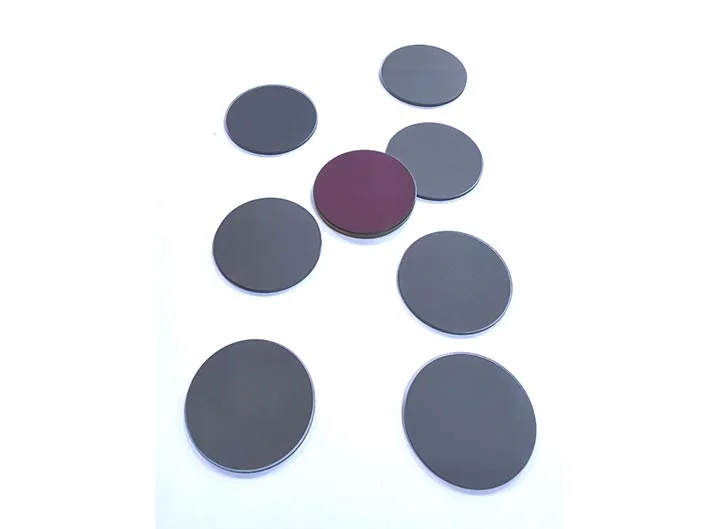Infrared filters are super important for making optical microscopes work better. They help pictures look clearer and sharper. As science stuff gets trickier—like in medicine, material checks, or factory work—picking the right infrared (IR) filter can make a huge difference. It helps you see tiny details, cuts out fuzzy stuff, and makes tests super accurate.

Understanding Infrared Filters
What Is an IR Filter?
Types of IR Filters
There are a few main kinds of infrared filters for microscopes:
- Short-Wave Pass Filters (ISP): These block long IR light but let short IR light pass.
- Long-Wave Pass Filters (ILP): These let long IR light through and stop short light.
- Bandpass Filters (INBP): These only let a tiny chunk of IR light pass.
- Anti-Reflection Filters (IAP): These cut down on light bouncing off to make pictures clearer.

- Broadband IR Filters (IWBP): These cover a big range of IR light and are good for lots of jobs.
Each kind does a different job based on how your microscope is set up and what you’re looking at.
Why Use Infrared Filters in Optical Microscopes?
Infrared filters make pictures look way better. They cut out extra light, make details stand out, and focus on the exact light you need. This is super key for:
- Medical imaging: You need exact light to see glowing stuff or tissue differences.
- Material science: IR light can go through stuff that regular light can’t show.
- Farming or nature checks: IR helps spot heat, water, or life patterns you can’t see with normal light.
Key Things to Think About When Picking IR Filters
1. Light Range and How Much Passes Through
First, figure out what light range you need. Near-infrared (NIR) filters cover 0.75 to 1.5 μm. Mid-infrared (MIR) filters work in the 3–5 μm range.
Jingyi Bodian makes filters that let through tons of light (up to 90% or more). They can make super narrow light ranges. These are perfect for tricky jobs like glowing tests or IR science.
2. Blocking Power and Clearness
Optical density (OD) shows how well a filter stops unwanted light. An OD6 filter blocks 99.9999% of light you don’t want. This keeps pictures clear and sharp.
This matters a lot when you need super clear results. Jingyi Bodian builds filters with strong blocking and custom OD setups for whatever you’re doing.
3. What the Filter’s Made Of and How It’s Coated
Filters need to be made from stuff that lets the right IR light through. Common materials are:
- Germanium and Silicon: Great for mid-IR light.
- Zinc Selenide (ZnSe) and Calcium Fluoride (CaF₂): Good for bigger IR ranges.
- Sapphire and Optical Glass: Tough and work for mixed light.
Jingyi Bodian uses cool tricks like vacuum evaporation and magnetron sputtering. These make coatings even, stick well, and stay strong in hot or wet places.
4. Size and Fitting Your Microscope
Filters gotta fit your microscope’s setup, like in a filter cube, wheel, or slider. You might need custom shapes, sizes, or thicknesses for fancy microscopes.
With 40 years of know-how, Jingyi Bodian makes filters just right for your setup. They do standard 25mm round ones or special square or rectangle shapes.
Where Infrared Filters Help in Microscopes
Medical Imaging
Infrared filters are a big deal for looking at living cells. IR light is gentle, so it doesn’t hurt cells or fade glowing markers. In glowing tests, bandpass and dichroic filters team up to pick out exact light from stuff like Cy7 or IRDye800.
Jingyi Bodian gives super narrow filters for things like POCT tests, flow cytometry, or fluorescence PCR machines.
Tech and Factory Checks
In electronics or chip-making, IR filters let you see through silicon wafers. They spot cracks or flaws. Long-pass filters with sharp edges work great in near-IR laser microscopes.
Farming and Nature Studies
Microscopes for remote sensing or life checks use IR filters to show water levels, plant stress, or heat changes. Jingyi Bodian’s broadband filters help catch a wide range of light for these jobs.
Cool Stuff and Custom Work at Jingyi Bodian
Jingyi Bodian Optical Technology Co., Ltd. is a big-deal company in Beijing. They’re super good at making awesome optical filters. They have over 20 kinds of filters for ultraviolet to infrared light.
What makes Jingyi Bodian special?
- Super Clear Filters: Filters let through >90% light and block OD6, perfect for science or army gear.
- All-in-One Making: They do everything from polishing glass to adding coatings and testing light.
- Fancy Tools: They use machines like Leybold Syrus 1350, Helios800, and Optorun OTFC-1300 for coatings.
- Quick Custom Jobs: They make filters fast for small tests or big factory orders.
With smarts in vacuum tech, design, and light testing, Jingyi Bodian helps folks in medicine, cars, planes, and defense all over the world.
Handy Tips for Buying Filters
- Ask for light data: Good sellers give charts showing how much light passes or bounces. Jingyi Bodianshares test results.
- Check toughness: Make sure filters can handle your heat or wet conditions.
- Talk to experts: Use the seller’s know-how to pick the best filter mix for your job.
Extra Advice for Picking the Perfect Filter
When you’re choosing an IR filter, think about what your microscope does. For glowing tests, bandpass filters are your buddy. For seeing through stuff like silicon, long-pass filters rock. If you’re doing big nature studies, broadband filters are the way to go. Jingyi Bodian can tweak filters to match your microscope’s size or light needs. They even help you figure out what’s best if you’re not sure. Always check if filters follow rules like ISO or RoHS to keep things safe and legit.
Why Jingyi Bodian Is Awesome
Jingyi Bodian doesn’t just make filters—they make microscopes better. Their team tests every filter like crazy to make sure it’s top-notch. They use the best glass and machines to keep quality super high. Plus, they’re super quick at turning your ideas into real filters. Whether you’re studying cells, checking chips, or watching plants, Jingyi Bodian has the skills to make your project shine.
Conclusion
Picking the right infrared filter for your optical microscope isn’t just a tech choice—it’s a smart move. The right filter makes pictures sharper, clearer, and better overall. Whether you’re doing doctor tests or super cool material studies, a top-quality, job-specific IR filter is the key.
With tons of know-how and bendy making skills, Jingyi Bodian is ready to give you infrared filter solutions that fit the growing needs of microscopes everywhere.
FAQs
Q1: What infrared light range is most used in microscopes?
Most microscopes use near-infrared light (750–1400 nm). Mid-infrared (3–5 μm) filters are for special heat or science pictures.
Q2: Can infrared filters work in glowing tests?
Yes! Lots of glowing markers shine in near-infrared. Bandpass filters grab their light without extra fuzz.
Q3: How long do IR filters last when used a lot?
With good care and the right setup, top filters like Jingyi Bodian’s can keep working great for 5–10 years, depending on how much you use them

